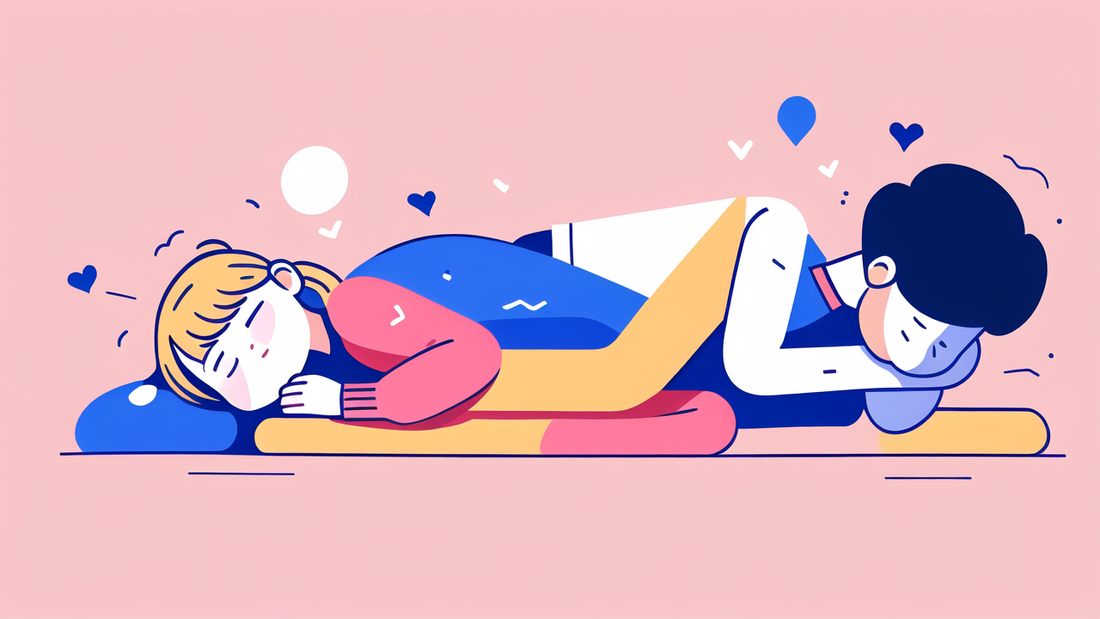
Baby Sleeping Face Down: Risks, Prevention, and Safe Sleep Practices
Understanding the Risks of Babies Sleeping Face Down
The Health Implications for Babies
When babies sleep face down, it can lead to serious health issues. This position can make it hard for them to breathe. It may also cause them to rebreathe their own exhaled air. This can lead to a buildup of carbon dioxide in their system. Over time, this can affect their oxygen levels. It may also impact their heart rate and breathing patterns. Some babies may develop flat spots on their heads from this position. This can lead to issues with skull shape and facial symmetry. In severe cases, it might even affect brain development.

Potential Harm to the Brain and Spine
Sleeping face down can put pressure on a baby's delicate brain and spine. The soft spots on a baby's head, called fontanelles, are still forming. Too much pressure can lead to misshaping. It may also hinder proper brain growth. The spine, which is still developing, can be affected too. Constant face-down sleeping might cause the spine to curve unnaturally. This can lead to long-term posture problems. In some cases, it may even affect the baby's motor skills development. The pressure on the face can also impact facial bone growth.
Increased Risk of Sudden Infant Death Syndrome (SIDS)
Face-down sleeping significantly raises the risk of SIDS. SIDS is the unexplained death of a seemingly healthy baby, usually during sleep. Babies who sleep on their stomachs are up to 13 times more likely to die from SIDS. This risk is highest in the first six months of life. Factors that may contribute to this include:
- Rebreathing of exhaled air
- Overheating
- Airway obstruction
- Decreased arousal response
Babies in this position may have trouble lifting their heads if they need fresh air. This can lead to suffocation.
Strategies for Preventing Babies from Sleeping Face Down
Creating a Safe Sleep Environment
A safe sleep environment is crucial for preventing face-down sleeping. Here are some key steps:

- Use a firm, flat sleep surface
- Keep the crib clear of toys, blankets, and pillows
- Ensure the mattress fits snugly in the crib
- Use a fitted sheet designed for the mattress
- Keep the room at a comfortable temperature
- Use a fan to improve air circulation
- Place the crib away from windows, cords, and heating vents
- Consider using a sleep sack instead of blankets
- Avoid bed-sharing with your baby
- Place the crib in your room for the first six months
These steps help reduce the risk of face-down sleeping and SIDS.
Using the Right Bedding and Clothing
Proper bedding and clothing play a big role in safe sleep. Here are some tips:
- Use a firm mattress with a tightly fitted sheet
- Avoid soft or loose bedding
- Don't use crib bumpers
- Dress your baby in light sleep clothing
- Use sleep sacks or wearable blankets instead of loose blankets
- Ensure the baby's face and head remain uncovered during sleep
- Choose breathable fabrics for bedding and clothing
These choices help prevent overheating and reduce the risk of suffocation.
Educating Parents on Safe Sleep Practices
Education is key to preventing face-down sleeping. Parents should learn:
- The importance of back sleeping
- How to create a safe sleep environment
- The risks of face-down sleeping
- How to properly position the baby
- The signs of respiratory distress in babies
- When to transition to different sleep positions
- The importance of tummy time while awake
- How to handle sleep regressions safely
- The role of pacifiers in safe sleep
- How to respond if they find the baby face down
Pediatricians, nurses, and child care providers should reinforce these messages.
Safe Sleep Practices for Babies
The Role of Supervision and Vigilance
Constant supervision is crucial for baby sleep safety. Here are some key points:

- Check on your sleeping baby regularly
- Use a baby monitor for added vigilance
- Be aware of your baby's normal sleep patterns
- Look for signs of distress or discomfort
- Respond quickly if you notice any issues
- Ensure all caregivers know safe sleep practices
- Be extra vigilant during naps and nighttime sleep
- Pay attention to your baby's positioning throughout sleep
- Don't rely solely on movement monitors
- Trust your instincts if something seems off
Remember, nothing replaces direct supervision by a responsible adult.
Alternative Sleeping Positions and Products
While back sleeping is best, some alternatives can help:
- Side sleeping (under medical advice)
- Elevated head of the crib (for reflux)
- Sleep positioners (only under medical guidance)
- Swaddling (until the baby can roll over)
- Sleep sacks with arm holes
- Breathable mesh crib liners
- Wedge pillows (only for supervised naps)
- Specialized mattresses for flat head syndrome
- Baby hammocks (for supervised naps only)
- Co-sleepers that attach to adult beds
Always consult your pediatrician before using any sleep product.
When to Seek Professional Medical Advice
Sometimes, professional help is needed. Seek medical advice if:
- Your baby consistently rolls onto their stomach
- You notice breathing difficulties during sleep
- The baby shows signs of sleep apnea
- There's persistent head tilting or neck stiffness
- You observe excessive sweating during sleep
- The baby seems uncomfortable in the recommended sleep position
- There are signs of reflux or colic affecting sleep
- You notice flat spots developing on the baby's head
- There are changes in the baby's sleep patterns or behavior
- You have concerns about your baby's development
Don't hesitate to consult your pediatrician with any sleep-related worries. They can provide guidance tailored to your baby's needs. Remember, every baby is unique, and what works for one may not work for another. Always prioritize safety in your baby's sleep routine.
